Discover the vibrant city of Leeds, the third largest city in the UK, and explore its history, culture, invention of fizzy drinks, and tallest maypole.
Content
- Why Leeds in England is a Necessity to Visit for the Tourist
- Unusual and Best Shopping Malls in Leeds
- Transport in Leeds: Modes of transportation
- One-of-a-kind Hotels in Leeds
- A Day Out in Leeds as a Tourist
Why Leeds in England is a Necessity to Visit for the Tourist
A city is more than just a place; it is home to people and their businesses. The same can be said for a country- a nation consists of many cities that each play a unique role in its history. Some cities are proud of the heritage they showcase and work hard to preserve their old buildings. Others are famous for their natural beauty and appeal to visitors from all over the world. One such city is Leeds in England, in the Yorkshire & Humber Region, where residents and tourists alike relish the beauty of this old town.
It is the third largest city in the UK and is one of the most popular destinations for tourists and business travelers alike, and is also the most populous city in northern England. With a population of over 700,000 people, it has a wide range of attractions and a vibrant culture, making it a great place to visit and explore. From the great shopping and nightlife to the historic architecture and stunning scenery.
Where does the city’s name come from?
The city’s name comes from the old name for Leodis or Ludgate, which was derived from the Celtic word ‘Luddacun,’ which referred to a place for collecting firewood. The city is also known as ‘the white rose city.’ The city has many parks, theatres, art galleries, and museums that showcase its rich history.
15 Bits of History About Leeds in England
- Leeds was founded in the 5th century by the Kingdom of Elmet.
- Leeds has been an important trading center since the Middle Ages, becoming a bustling market town in the 1600s.
- The Leeds and Liverpool Canal was opened in 1816, connecting Leeds to the rest of the country.
- The Industrial Revolution saw Leeds become an important manufacturing town, with the city becoming known for its wool and cloth trade.
- The Victorian era saw Leeds become an important center for engineering and transport, with the development of a network of railway lines and the invention of the steam locomotive.
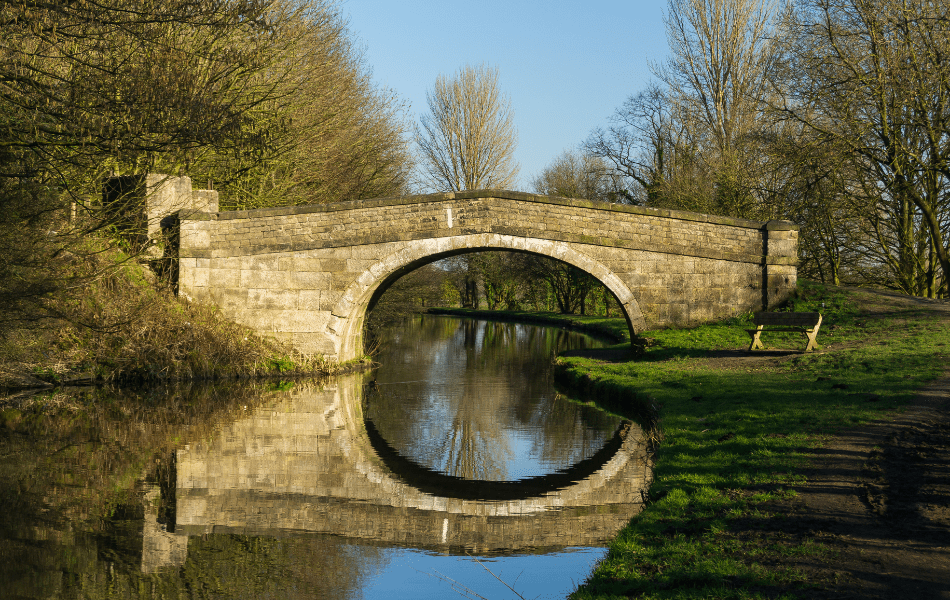
- Leeds was granted city status in 1893 and in the same year, Leeds University opened its doors.
- The First World War saw Leeds become an important military center, with the city playing a major role in the production of aircraft and munitions.
- During the Second World War, Leeds was heavily damaged by German bombing raids.
- In the post-war period, Leeds was transformed, with the city undergoing extensive redevelopment.
- In the 1960s Leeds was transformed into a modern, vibrant city, with a new shopping center, a new university campus, and a new airport.
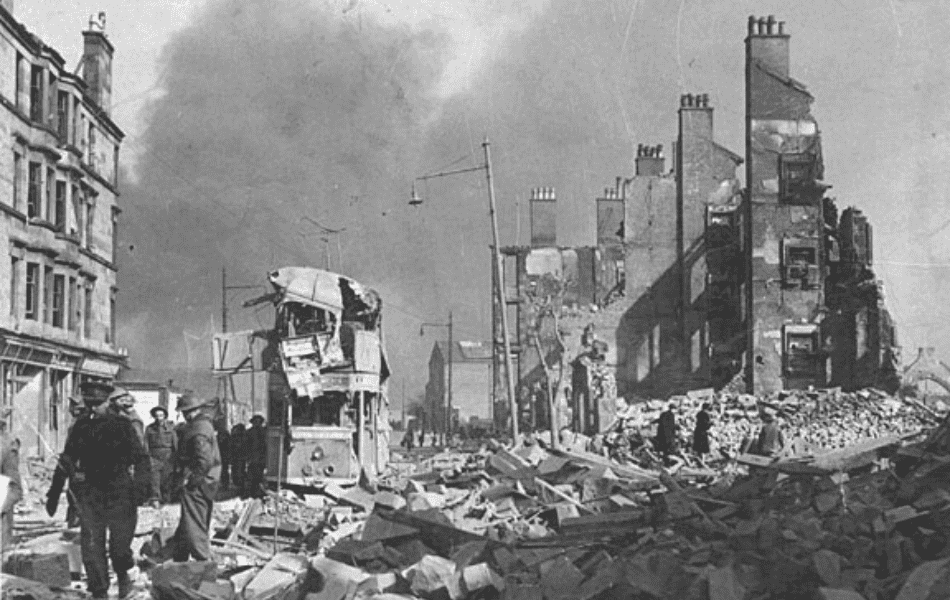
- In the 1970s Leeds became a major center for music, with the Leeds Festival becoming an annual event.
- In the 1980s, Leeds transformed again with the building of the Leeds City Centre Shopping Mall.
- Leeds has been a major center for culture and the arts since the 1990s, with a number of museums, galleries, and theatres opening.
- Leeds has been a major center for business and finance since the 2000s, with a large number of major companies having their headquarters in the city.
- Leeds has become a major tourist city with tourists from all over the world visiting.

Unusual and Best Shopping Malls in Leeds
For a truly unique shopping experience, be sure to explore some of the city’s unusual and best shopping centers. From historic arcades to modern malls, Leeds has it all.
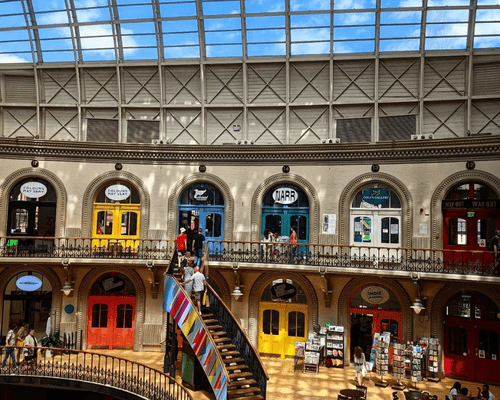 | The Corn Exchange is a Grade I listed building located in the heart of Leeds city center. Built in 1864, it was originally a grain exchange and has since become one of the city’s most iconic landmarks, playing an important role in the city’s life. It boasts a diverse range of independent stores, restaurants, and cafes. From fashion and lifestyle stores to homeware and gift shops. |
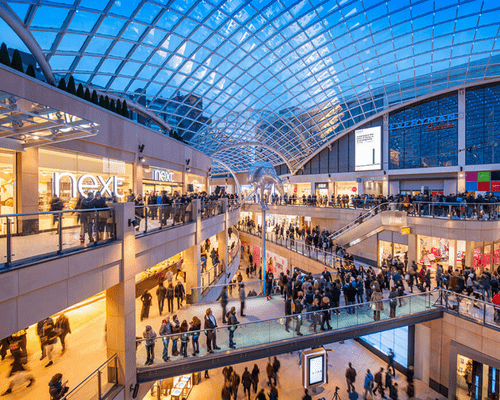 | Trinity Leeds Shopping Centre It is one of the largest shopping centers in the United Kingdom. The mall is home to over 200 stores, including major retailers such as John Lewis, Primark, and Marks & Spencer. The mall also houses a variety of eateries, including chain restaurants, cafes, and fast food outlets. The mall also has a range of leisure activities, such as a cinema \ complex, a bowling alley, and a mini golf course. The mall also has a range of events and activities, including live music, craft workshops, and seasonal events. |
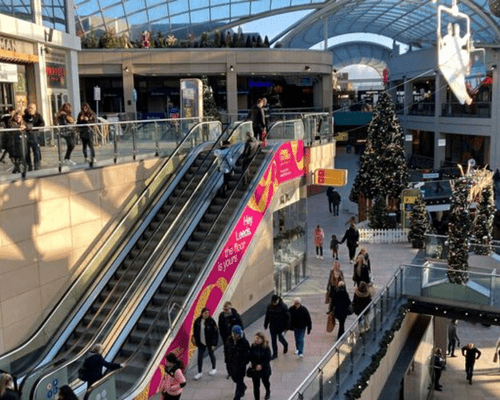 | White Rose Shopping Centre It opened in 1997 and covers an area of over 600,000 square feet. The center boasts over 140 stores including many high-street retailers, such as Primark, Next, and Marks & Spencer. The the center also offers a cinema, ice rink, bowling alley and a leisure center and is easily accessible by car, bus, train, and tram. |
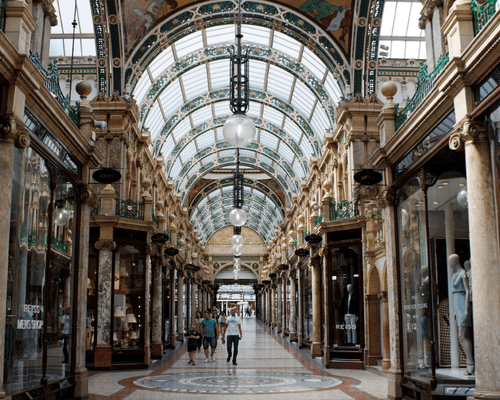 | Queens Arcade The arcade was built in 1897 and features two floors of independent shops and eateries. Spanning over 120 meters, the arcade is home to a variety of stores, including jewelers, bookshops, clothing stores, and beauty salons. The arcade also houses an antique shop and a vintage clothing store. |
 | St. John’s Centre The shopping center has over 50 stores, cafes, restaurants, and leisure facilities, providing a great shopping experience for all. The center offers a wide range of fashion, beauty, technology, and home goods, as well as a selection of eateries and leisure activities. There is a multi-story car park at the center, making it easy to access the shops and enjoy the atmosphere of the shopping center. |
Transport in Leeds: Modes of transportation
The first public road in England was constructed in 1814 in Leeds. This was a huge step forward for the country as it allowed people to travel at will. Many modes of transport have been introduced since the beginning of public roads, including cars, trains, and planes. Each mode has its advantages and disadvantages, but all modes of transport are necessary to live.
Public and private modes of transport serve different purposes, but they are both necessary. For instance, people in Leeds travel using trains, cars, buses, and planes every day. Trains are fast and reliable, but they’re also expensive to construct and operate. Cars are slow but comfortable and can get you where you need to go quickly. Buses are convenient but can be crowded and uncomfortable, while planes are quick and convenient but costly.
Leeds is well-connected by train as it is on the railway network. Many trains travel between Leeds and London each day. Furthermore, the city is on the Pennine route, which makes it well-connected with other cities in England. The train station is close to the city center so people from the suburbs can easily reach their destinations. An airport has recently opened near the city which makes travel even easier- although flights from the city aren’t cheap. People from Leeds have many options for getting around their city.
Many people in Leeds travel to work by plane each day. The airport is close to the city center so people don’t have to walk far after arriving. However, flights can be expensive so people often choose trains or buses over flying every day. People from Leeds also work in other cities around England so they can easily travel to work there by train or bus. There’s also a fast train service that connects Leeds with Manchester in under an hour- making it easy to travel between cities.
All modes of transport are necessary in today’s world. People in Leeds use trains, cars, buses, and planes every day to get where they need to go. Each mode has its advantages and disadvantages; however, all modes are necessary for modern society.
One-of-a-kind Hotels in Leeds
Creative, independent thinkers and social reformers have called Leeds their home since the late 18th century. The city’s prominent creative talents have led to thriving IT and creative industries, which makes it a fascinating place to visit or live in. One of the coolest things about living in this dynamic city is that it boasts a wide array of unique hotels.
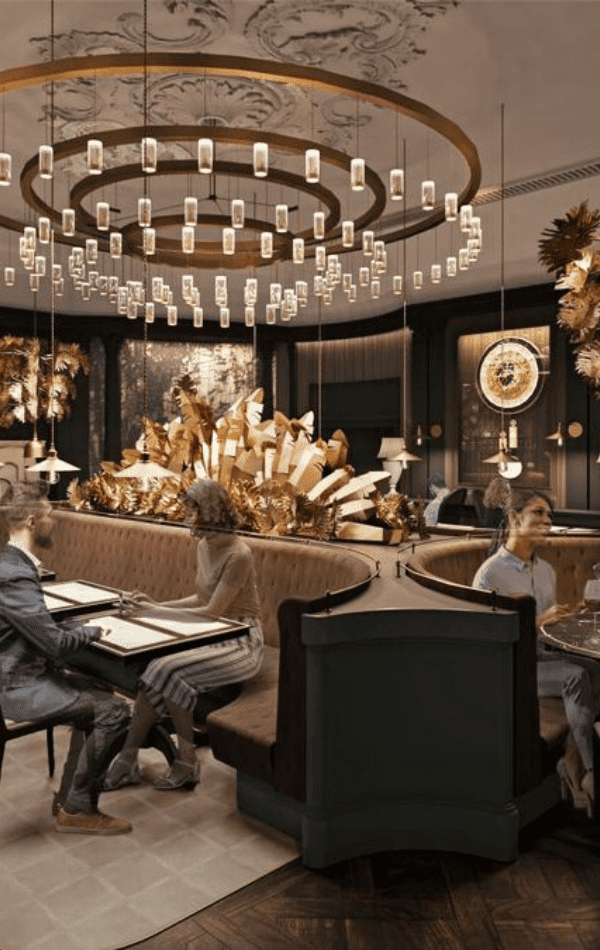
The Queens Hotel: unique & special for guests
The Queens Hotel in Leeds is one of the most famous hotels in the country. It’s known for its architecture, location, and royal connection. In fact, Queen Elizabeth II has stayed at the Queen’s Hotel herself. As such, it is a perfect choice for any royal event. Fans will also find that this hotel provides excellent service at very reasonable prices.
It is located on the banks of the River Wharfe in Leeds city center. This gives the hotel an excellent view of the city’s famous landmarks- most notably Town Bridge and The Millenium Gate. Furthermore, it also allows guests easy access to The Victoria and The Corporation Lifts. These three landmarks combined with Town Hall and The Queens’ Drive give visitors an excellent sense of the city’s character.
Each floor of this Victorian building features a different Florentine style. This creates a visually stunning structure that stands apart from any other hotel in the country.
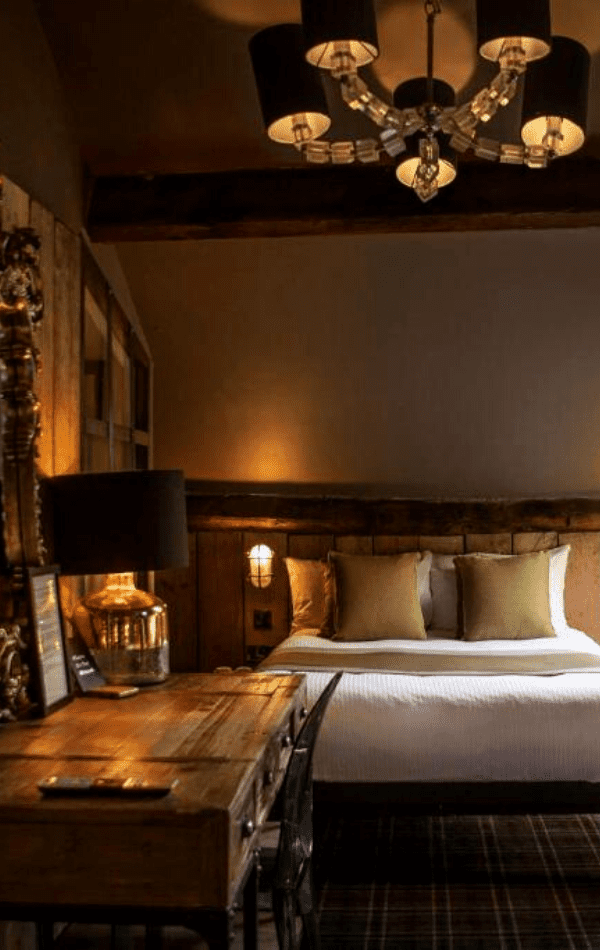
Briggate Hotel: a rare find
The Briggate Hotel in Leeds is a classic hotel with a rich history. The name ‘Briggate’ refers to the road that originally ran through the original building’s grounds. This eight-story Victorian hotel has 154 rooms and a restaurant on the ground floor. It also has a bar, lounge, and fitness center on the upper floors. The hotel is located near the city center and is easily accessible by public transportation.
Built in 1820, the Briggate Hotel has been through several renovations since then. The original building was five stories high and had two wings extending to the east and west. In 1984, a complete overhaul of the hotel completely transformed it into its unique Victorian style.
Today, the Briggate is one of the most popular hotels in Leeds. It’s located near several attractions and businesses that cater to tourists. Plus, its central location makes it easy for guests to get around the city without difficulty. The Briggate has 154 rooms.
Briggate’s main attraction is its bar and lounge on the ground floor known as ‘The Gentleman’s Club.’ This establishment has been rated as one of England’s most famous bars by BBC reporters.
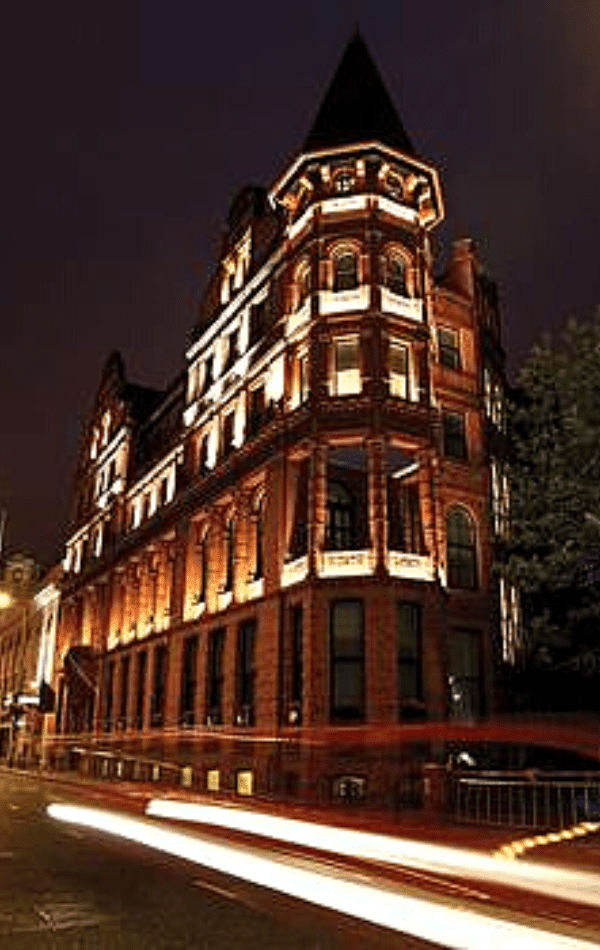
Quebecs Hotel: excelling in unique ways
The Quebec in Leeds opened its doors in 1937 and quickly became a hit with tourists. The hotel’s location allowed it to serve many bus and train passengers. Many travelers choose this hotel based on its excellent food and drinks. The front desk staff can recommend a drink or dish that perfectly complements their meal.
Guests that stayed at the Quebec loved its food so much that they wrote reviews about it online. They said it was some of the best food they’d ever had outside of France. They especially loved the desserts, which were unlike anything they’d ever tasted before. In addition, staff members were very friendly and willing to help with recommendations for local restaurants and shops. They loved working with this hotel so much that they wrote articles showcasing their experiences there.
The Quebecs quickly became known for their excellent food and drinks. Many people from Leeds came to try out the famous cocktail bar, La Fabuleuse Barriere du Quebec (The Marvelous Barrier of Quebec). Guests loved this bar because bartenders used fresh ingredients in their cocktails every day- unlike other bars where bartenders just made drinks according to a list. Some people even came from Paris just to try this bar out!
A Day Out in Leeds as a Tourist
Residents of the city call it the People’s Republic of Leeds. It’s also known as the first city in England to introduce streetlights. The city is home to the University of Leeds and several other schools, colleges, and universities. It’s also home to the West Yorkshire Police and Fire & Rescue services. In this section, we’ll look at some of the best things to do in Leeds for visitors and residents alike.
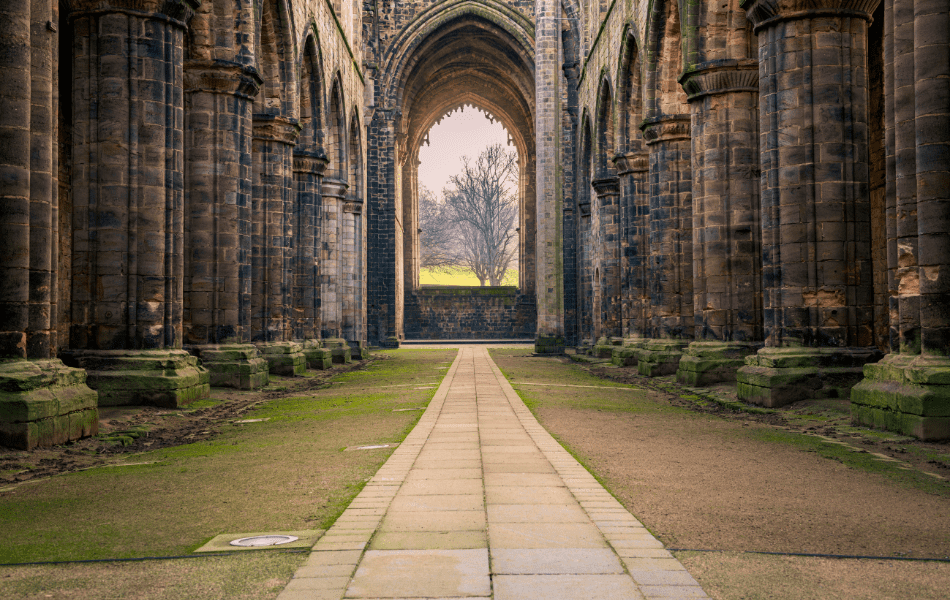
As a major transportation hub, Leeds attracts tourists from around the world. The city has many visitor information centers, including one inside its train station. Many hotels in the city have complimentary shuttle services to popular local attractions. Tourists also have easy access to transportation in the city via bus and train. The train station has ticket offices, a café and a travel agency where you can book tours and tickets. Additionally, there are several car rental agencies in the city center.
The major attractions for tourists are similar to those for residents: churches, museums, and libraries. These include Central Library, Armley Mills, Town Hall, Chapeltown Library and Museum, and Kirkstall Abbey. It is a ruined Cistercian monastery, dating back to the 12th century.
The abbey was founded by a group of monks who left Fountains Abbey in Yorkshire to create their own monastery. Over the centuries, the abbey fell into disrepair and was eventually abandoned in the mid-16th century. Today, Kirkstall Abbey is a popular tourist attraction, with visitors able to explore the ruins and learn more about its history. The abbey is also home to a number of events throughout the year, such as open-air concerts and plays.
Other notable attractions include Cathedral Close, The City Center, and Belle Vue Park. Each of these has something unique to offer visitors.
Adults enjoy exploring Leeds’ natural wonders as well as its historic sites. Some of these natural wonders include Woodhouse Moor, Heptonstall Moor, and Wethersfield Park Parkland Gardens. These have walking trails, gardens, and wildlife including peacocks and koi fish. Shrunken City is another natural wonder; this is a former copper mine that now contains strange underground formations. Other popular natural attractions include Clifton Moor Park – an area of ancient woodland – and Ilkley Cliff Gardens with its waterfall, hiking, and jogging trail.
Leeds offers visitors a lot of opportunities for relaxation by using its parks, sports facilities, and swimming pools. This includes Grand Pool or Riverside Sports Centre – Europe’s largest indoor swimming pool – and Headingley Carnegie Sports Ground (home of Yorkshire County Cricket Club). The latter also has an outdoor cricket field along with tennis courts, basketball courts, and tables for quo games like darts. Managed by West Yorkshire County Cricket Club, Headingley Stadium is another sports venue worth visiting.
Why must you visit Leeds Castle?
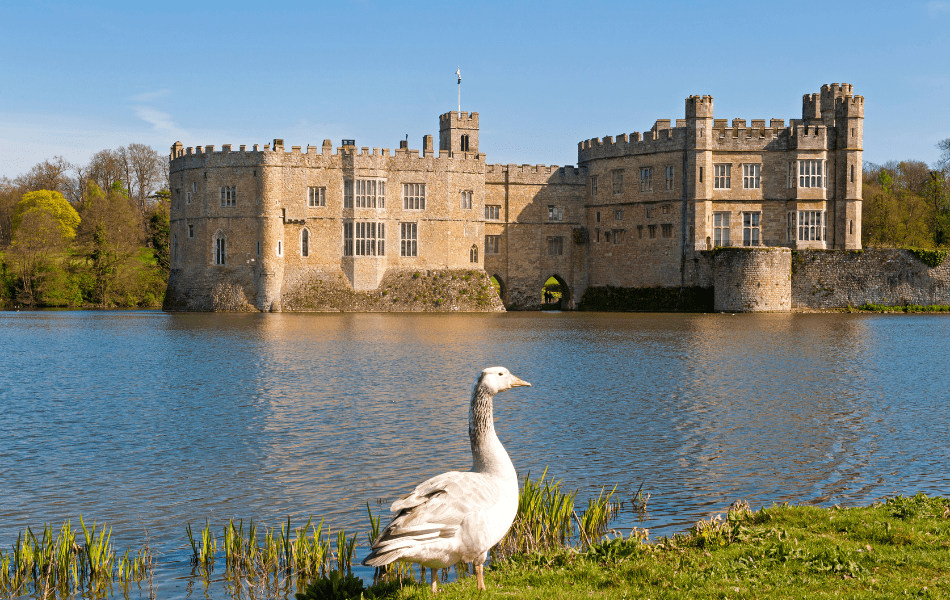
Leeds Castle is a spectacular and grand castle located in Kent, England. Built during the 12th century, the castle has been a home to royalty, a stronghold, and a luxurious stately home. It is now a popular tourist attraction and a must-see for anyone visiting England.
The castle is surrounded by 500 acres of beautiful parkland, gardens, and an impressive lake. Visitors can take a guided tour of the castle and explore the magnificent interiors and staterooms. In addition, there are also many entertaining and educational activities available, such as falconry displays, special exhibitions, and the Castle Maze.
The castle itself is large, with four stories and over 70 rooms. It is full of grandeur and history, with beautiful antiques and artwork. Visitors can also stay overnight in the castle, with luxurious accommodations and fine dining to be enjoyed.
Leeds Castle also has some of the most magnificent gardens in England. There are landscaped gardens, meadows, and a rose garden. There is also a variety of plants, trees, and flowers, which change with the seasons.
England is made up of nine different regions, each one unique in its individual character in history, geography, purpose, and tourist attractions. In this first article, I am focusing on the city of Leeds in this article, in the Yorkshire and Humber Region then moving on to the other regions in other articles. If you would like to know more about the other regions, read through the links.
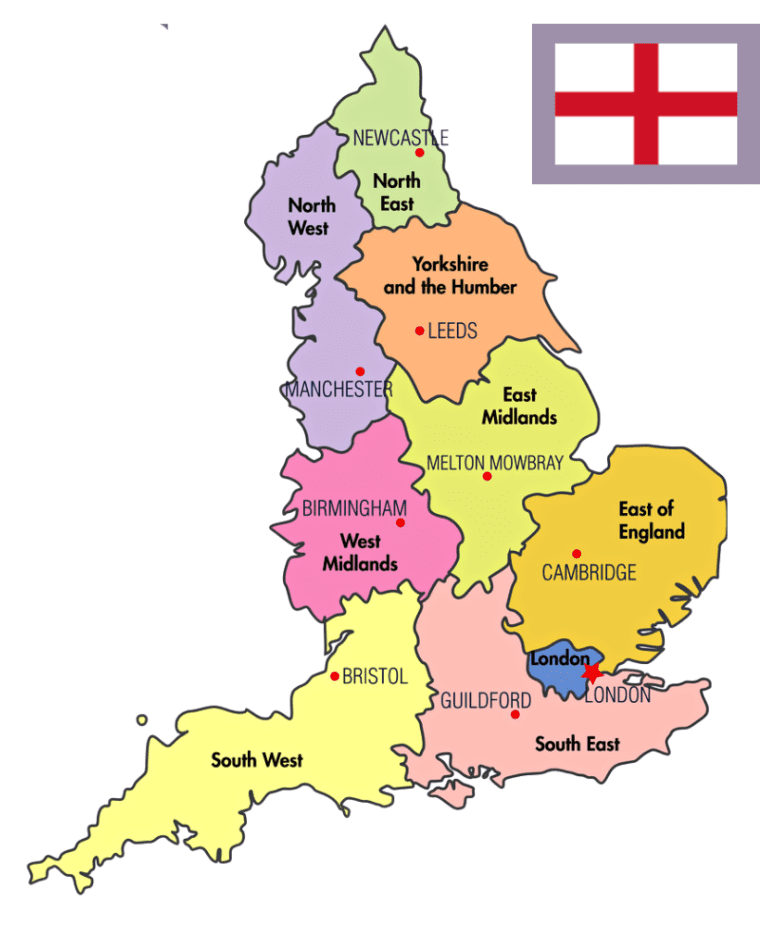
9 Different Regions
- North East – largest city Newcastle
- North West – largest city Manchester
- Yorkshire & the Humber – largest city Leeds
- East Midlands – largest city Melton Mowbray
- West Midlands – largest city Birmingham
- South West – largest city Bristol
- South East – largest city Guildford
- London – London
- East of England – largest city Cambridge
Based on these ideas, it’s easy to see why so many people visit Leeds each year. Visitors find many great places to spend their time exploring the city’s natural wonders or relaxing at various parks and sporting venues. Either way, you look at it, Leeds has something for everyone- from families to students- who want a memorable experience in this historic city!
Visiting Leeds? Let us know in our comments section, what your itinerary is so others can get some ideas.
Recent Posts
Discover insider tips to find cheap flights from the UK, save on easyJet, Ryanair & BA, and score the best weekend and last-minute deals. Why You’re Paying Too Much for Flights Most UK...
Discover the sounds of travel, from laughing kookaburras to market chatter, church bells to ocean waves - a journey heard as much as seen. It always starts with a sound. The other day, walking...

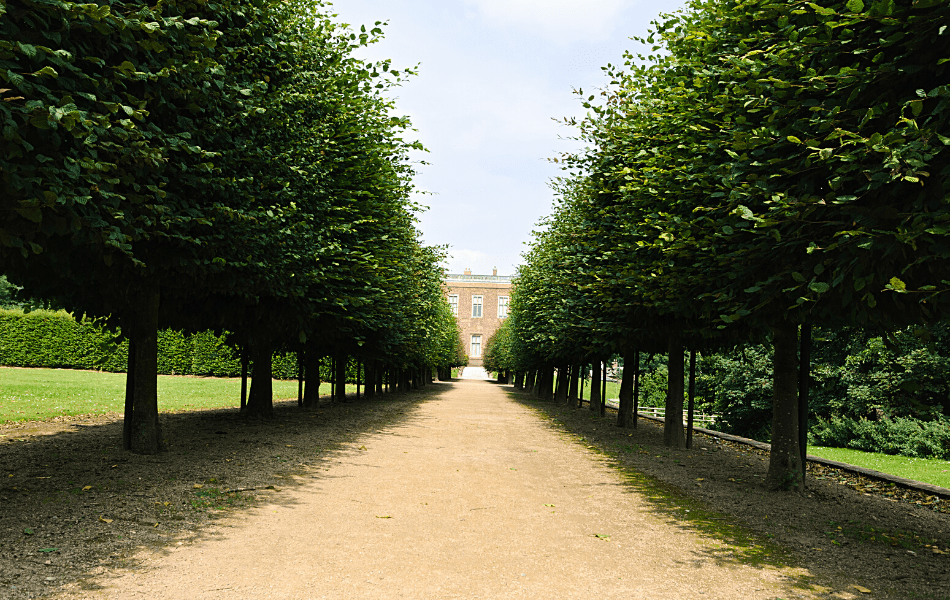
18 thoughts on “Vibrant City of Leeds, England”
Comments are closed.